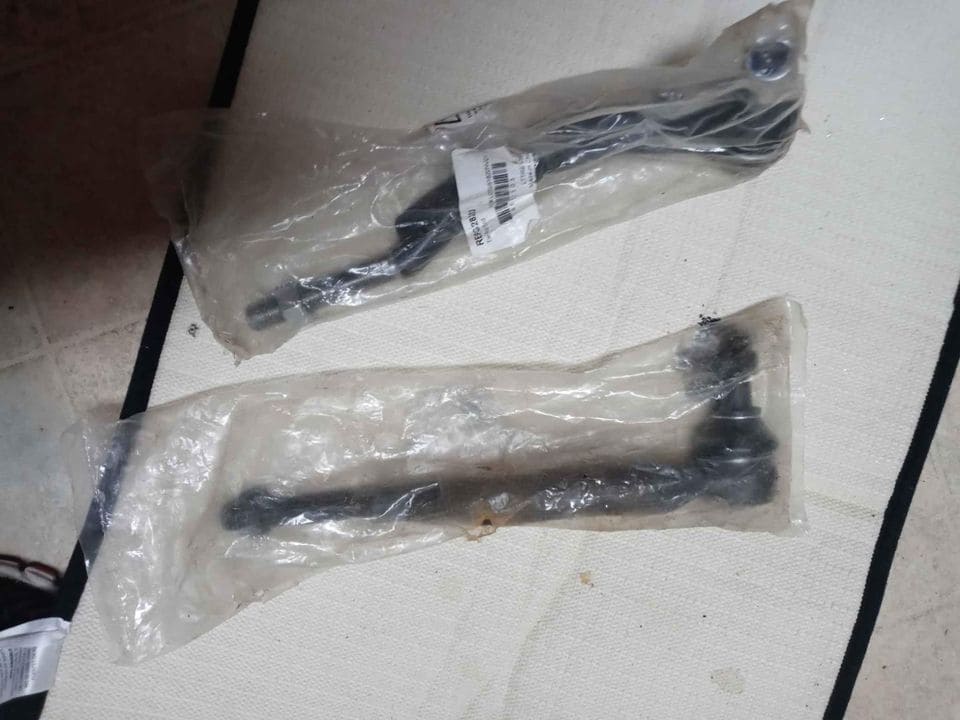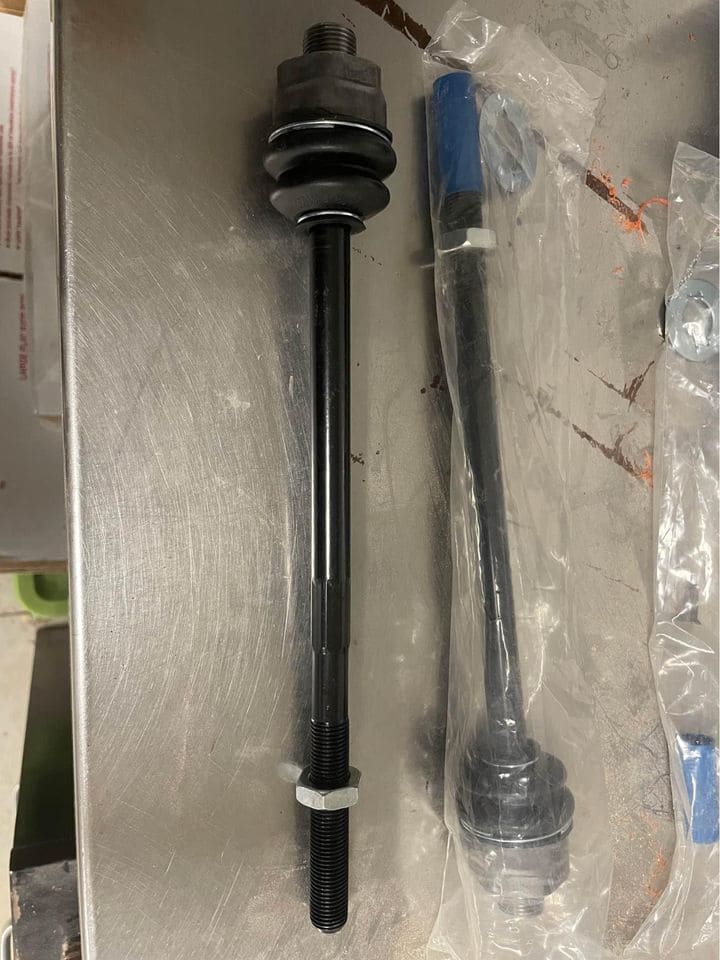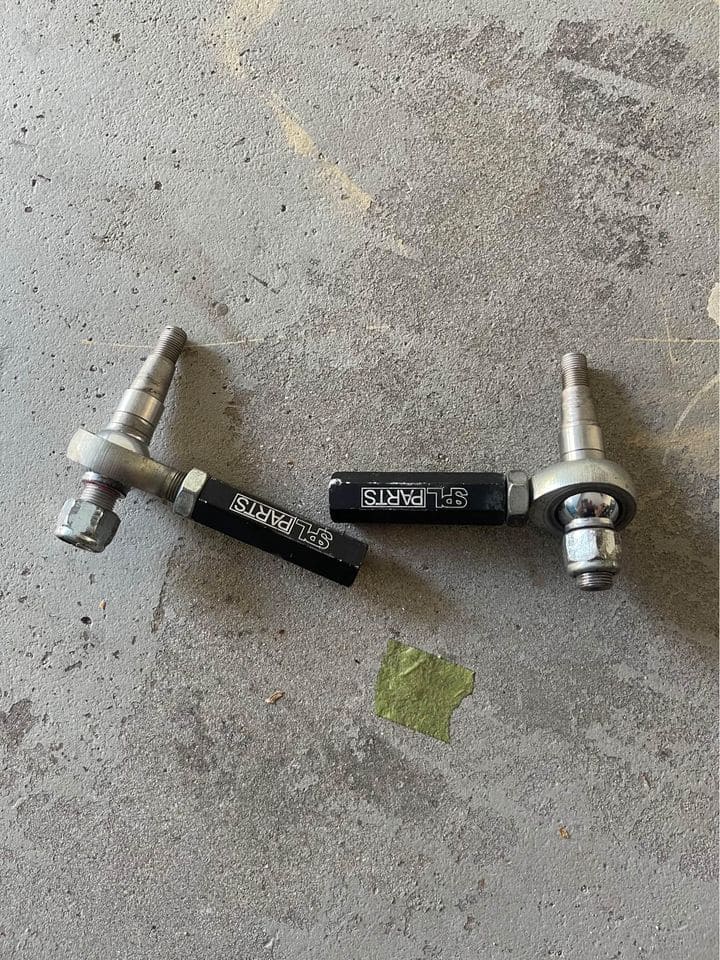Understanding how a car works are challenging enough if you’re not a mechanic. Every car owner faces difficulty comprehending the mechanism when something breaks down. It is necessary and inevitable. If you hear clomping sounds or vibrations from under your car’s wheels when you move it around, that means you may have a faulty tie rod. It is important to proceed with the examination so the car will not break down completely.
Summary
The most common signs of bad tie rods include a clunking sound and a car that vibrates. The conditions of the road determine how long you can drive on them with bad tie rods. However, prepare yourself that the repair cost may increase if you do.
In this article, we also look at the following:
- What happens when they break
- How long they are expected to last
Continue reading

The clunking sounds are not the only symptoms of bad tie rods. To diagnose it right, you should have quality information that should be clear and comprehensive. Here you’d find the list of 10 signs of bad tie rods and any other information you need to know about that functional entity of your car. So keep reading!
Can you drive if there’s something wrong?
Driving with any faulty part of your vehicle is not safe. When it comes to driving with broken tie rods, it is possible. However, you should prepare yourself for the consequences. You will pay for a postponement when the whole suspension system breaks down.
It depends if you don’t have time for repairs and wonder how long you can drive on them. You may be able to drive with a faulty part for a month or just a few days. It all depends on road conditions and the state of the damage.
If that happens on the road, you must tow your vehicle right to auto service. Moreover, driving with a bad tie rod can cause a car accident. That’s why the moment you notice any of the first symptoms, do not hesitate to repair them.
10 Signs of Bad Tie Rods

Tie rods are made of high-strengthened steel, but that does not mean they will last forever. They become worn out with time. The time for their replacement will come even quicker if you often ride through poor roads with holes. If you notice any of the following symptoms of bad tie rods, do not hesitate to replace them. Without replacement, they can worsen the state of your tires or even cause an accident.
1. Steering wheel issues
Tie rods connect your steering wheel to the front wheels. If you notice that it becomes difficult to steer your wheel while driving, that is the first sign that they may be in poor condition. Your steering wheel can vibrate or shake when you’re turning it on its side. If it feels more loose than usual, it’s also a symptom of damage. Do not hesitate to call for technical support from professionals.
2. Clunking noise from the front
Irritating sounds coming out of your car are often the symptoms of damage. If you hear clunking or knocking noises coming from the front area of your car, it is a sign that it has become loose. When it happens, the tie rods hit the surrounding objects, and you hear the sound.
3. Vibrations while driving.
If you feel that your entire vehicle vibrates during acceleration and driving, that means you have bad tie rods. Vibration can also be a sign of them failing completely. If you feel your car is vibrating, examine it more to find other symptoms.

4. Your tires are uneven.
It’s not only steering those tie rods do. They have more complex purposes. One of their functional advantages is that they protect tires from wearing. Maybe you often drive through bumpy terrain or the roads in your city are full of holes. Keep in mind that you would have changed tires more frequently without tie rods.
That is why the condition of your tires will eloquently point out issues within the steering system. Look at your tires. If they are uneven and one has less wear than the other, you should check your tie rods for damage. On the other hand, even tires are a good sign of the absence of breakage.
5. You’re unable to steer.
The complete inability to steer is the latest stage of damage. Before that happens, you will probably notice some of the other symptoms. Don’t put off the repair so you won’t face the unfortunate consequences. The breakage can get you while driving, which is a dangerous situation to deal with. To avoid that, pay attention to the early symptoms and repair your vehicle as soon as possible.
6. The front is misaligned.
Tie rods are directly connected to the wheels. This can cause all sorts of misalignments. Not only will tires wear off unevenly, but the front position won’t match the back of the car. If you notice this type of unevenness, it’s time to visit an auto service.
7. Loose wheels
To check if your wheels are loose:
- Jack the car up.
- Put your hands on the wheel and try to shake it up and down.
- Try shaking it from side to side as well. If the only movement that the wheel makes is rotation, then you can be relieved.
You probably have a bad tie rod if it moves easily from side to side or up and down.
8. The vehicle shakes over 60 mph.
Does your car shake when you go over 60 mph? If it does, your tires are unevenly worn. Faulty tie rods make vehicle tires dissimilar, and that affects the driving. When you ride slowly, it isn’t noticeable. When you exceed the speed of over 60 mph, that’s when you’ll feel like being on a swing. Check your car for other symptoms when it is shaky.
9. You’re experiencing death wobbles.
Death wobbles happen when the steering wheel rotates quickly to the extent that it starts moving from side to side. It can happen when you move over 40 mph. Death wobbles indicate that there is a problem with the steering system. One of many issues that can cause death wobbles is bad tie rods.

10. You hear a grinding noise.
The noise can also come from a broken boot that supports the rod. In the case of that, you’ll hear a grinding noise. That will mean not only a broken boot but also that the dirt and debris have entered the system. Be aware that unusual sounds from behind the front of your car point straight away to the damage.
To sum it up:
- Watch out for grinding noise
- Vehicle shaking over 60mph
- Can’t steer your car
- Wheels are not aligned
- Uneven tires
- Clunking noise from engine
- Death wobbles
Common problems after replacement
After steering rod replacement, you naturally expect that there are going to be fewer problems to resolve. Sometimes the replacement is the thing that causes additional issues. With tie rods, it is often the case. You might need to return for another set of repairs.
A bad toe angle is one of the problems you may face right after leaving auto service. The reason why it happens is that the length of new ones is poorly matched. If you keep using your car after noticing the problem, there is a great chance you will damage the suspension and bump steer.
Maybe you are driving on an even road and your steering wheel suddenly pulls to the left or right. It your city are full of holes, keepmeans your vehicle has an alignment issue. It happens when the tie rods are not properly installed. In that case, the car will respond slowly to steering wheel movements.
After the repair, you expect not to hear any annoying noises, especially right before you. If you feel that the steering wheel is still vibrating, bad tie rods were changed incorrectly. In that case, reinstallation is needed. Maybe you still hear it during acceleration despite all your efforts to get rid of squealing. The problem of unevenly worn tires is still relevant due to the wrong repair.
If you notice that the car is consuming more gas than before, it’s a sign of uneven wheels. After replacing the tie rods, you should also do a wheel alignment. Moreover, this procedure is obligatory after any steering system repair. That is because changing any of the rods into new ones causes a change in wheel angles. If you don’t align your wheels, more expensive damage will follow.
Loose steering is something you can experience after changing the inner rod. The steering wheel will be too sloppy if the joint that connects the inner part to the outer part is not attached correctly during replacement. This unpleasant behavior can also be a symptom of a worn-out rod end.
When you change an element of the suspension system due to its age, it’s better to substitute all the constituencies with new ones. When some part wears out, it means most of the other ones are probably in bad condition. That’s why you should also change the steering rod end during the inner one replacement.
You should also consider switching ball joints for different ones. Even if they are not directly connected to tie rods, they can still cause a steering wheel lock. The same story is with the tie-rod boot. When worn out, it can damage your brand-new rods. They become faulty on their own when facing water or filth from roads.
Passion
Check your wheel bearings, brake rotors, and breaking pads as well. Wheel bearings grant the steering wheel a smooth and uninterrupted movement. If it’s faulty, you won’t experience easiness while driving. The same is with brake rotors and breaking pads, which are connected to the steering system and affect it. Once they break down, the surrounding elements suffer too.

